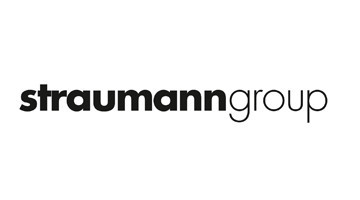A new study conducted by leading materials scientist Prof. J. Robert Kelly has confirmed that not all dental implant restorations are created equal. In this interview, Kelly discusses the research, which has very recently been published in the International Journal of Oral and Maxillofacial Implants.1 The findings make for positive reading for NobelProcera customers.
Nobel Biocare News: Your latest research tested the fatigue behavior of zirconia implant abutments from four major manufacturers. What led you to take this approach?
Prof. J. Robert Kelly: We wanted to study commercial products not in order to make commercial comparisons, but to study realistic products. Our goal was to look for processing problems and design issues, so it made sense to see what would happen with products on the market. We selected Straumann Bone Level (BL) Implants as our reference and the study received funding from the ITI Foundation. Our search for comparison third-party abutments for the BL implants led us to abutments from NobelProcera and Glidewell—for BL implants these two manufacturers only produce hybrid zirconia abutments that have a titanium insert interface to the implant—and the available abutments from Astra and Straumann that are fully zirconia.
What was your methodology for testing these products?
For the first phase, we first took six of the abutments in each of the four groups and tested them with repeated loads of 200 N. We chose 200 N for the accelerated aging based on our previous work. We did not want to break the implants, so we thought that was a fair load to start with. The results then allowed us to design the second phase, by determining the loads that we would use in testing with another 12 implants.
However, by the time we received the data from the first phase, we were astounded. There were clearly significant differences between manufacturers in each of the categories. This was subsequently verified in full-sample testing.
You found that the NobelProcera product outperformed the other abutments in this test significantly.
Yes, absolutely. While we had to reduce the load with some of the other abutments, with the NobelProcera product, we ran out (no fractures at 25 million cycles), so the load had to keep going higher and higher.
How would you explain this apparent weakness of the other abutments?
The vast differences were unexpected, as the macro-designs are similar across the manufacturers. To help determine why we were seeing such varied results, I asked my colleague Dr. Isabelle Denry to do scanning electron microscopy analyses. Looking at one of the poorest performing abutments in the study, she identified that the weakness was the result of damage arising from the manufacturing process—subsurface grinding damage, large cracks, inhomogeneous crystals and a diffuse layer of porosity. From this, it was evident that manufacturer matters.
There are many reports of issues caused by third-party abutments being used with a system that they were not designed for. Considering that manufacturer matters, do you advocate using only authentic components?
In general, I advise against using lower cost third-party abutments. There is too much to lose. From what we have seen over the years, the quality of the materials is inferior, and the outcome has such a high value: the patient has very high expectations of the clinician—why would you risk that to save $100?
Considering that the NobelProcera abutment for BL implants outperformed all of the others, what are your thoughts?
NobelProcera is produced in a high-quality process, since Nobel Biocare fabricates components that are designed, tested and then verified for the BL implant system.
Reference:
1. Kelly, J.R. & Rungruanganunt, P., “Fatigue behavior of computer-aided design/computer-assisted manufacture ceramic abutments as a function of design and ceramics processing”, International Journal of Oral and Maxillofacial Implants, 31/3 (2016).
NEW YORK, USA: Yesterday, the 2016 Nobel Biocare Global Symposium opened its doors to dental professionals from all over the world in the heart of New York....
The program for this year’s Nobel Biocare Global Symposium offers a rich variety of lectures, master classes and hands-on courses focusing on new ways...
NEW YORK, USA; The program of this year’s Nobel Biocare Global Symposium was designed to fit the needs of each and every individual ...
Dr. Annette Felderhoff-Fischer
Dr. Rafael Saviolo Moreira
Dr. Ian Lane Dip SED, BDS (Hons) (Ncl), MFGDP, MSc, KOIS Graduate



 Austria / Österreich
Austria / Österreich
 Bosnia and Herzegovina / Босна и Херцеговина
Bosnia and Herzegovina / Босна и Херцеговина
 Bulgaria / България
Bulgaria / България
 Croatia / Hrvatska
Croatia / Hrvatska
 Czech Republic & Slovakia / Česká republika & Slovensko
Czech Republic & Slovakia / Česká republika & Slovensko
 France / France
France / France
 Germany / Deutschland
Germany / Deutschland
 Greece / ΕΛΛΑΔΑ
Greece / ΕΛΛΑΔΑ
 Italy / Italia
Italy / Italia
 Netherlands / Nederland
Netherlands / Nederland
 Nordic / Nordic
Nordic / Nordic
 Poland / Polska
Poland / Polska
 Portugal / Portugal
Portugal / Portugal
 Romania & Moldova / România & Moldova
Romania & Moldova / România & Moldova
 Slovenia / Slovenija
Slovenia / Slovenija
 Serbia & Montenegro / Србија и Црна Гора
Serbia & Montenegro / Србија и Црна Гора
 Spain / España
Spain / España
 Switzerland / Schweiz
Switzerland / Schweiz
 Turkey / Türkiye
Turkey / Türkiye
 UK & Ireland / UK & Ireland
UK & Ireland / UK & Ireland
 International / International
International / International
 Brazil / Brasil
Brazil / Brasil
 Canada / Canada
Canada / Canada
 Latin America / Latinoamérica
Latin America / Latinoamérica
 China / 中国
China / 中国
 India / भारत गणराज्य
India / भारत गणराज्य
 Japan / 日本
Japan / 日本
 Pakistan / Pākistān
Pakistan / Pākistān
 Vietnam / Việt Nam
Vietnam / Việt Nam
 ASEAN / ASEAN
ASEAN / ASEAN
 Israel / מְדִינַת יִשְׂרָאֵל
Israel / מְדִינַת יִשְׂרָאֵל
 Algeria, Morocco & Tunisia / الجزائر والمغرب وتونس
Algeria, Morocco & Tunisia / الجزائر والمغرب وتونس
 Middle East / Middle East
Middle East / Middle East
:sharpen(level=0):output(format=jpeg)/up/dt/2024/04/Envista-names-Paul-Keel-new-CEO-1.jpg)
:sharpen(level=0):output(format=jpeg)/up/dt/2024/02/vVARDIS_article_1920x1080px.jpg)
:sharpen(level=0):output(format=jpeg)/up/dt/2024/04/Study-links-e-cigarette-use-with-increased-risk-of-heart-failure.jpg)
:sharpen(level=0):output(format=jpeg)/up/dt/2024/04/web_FDC_small.jpg)
:sharpen(level=0):output(format=jpeg)/up/dt/2024/04/web_Bassi.jpg)








:sharpen(level=0):output(format=png)/up/dt/2013/04/Dentsply-Sirona.png)
:sharpen(level=0):output(format=png)/up/dt/2022/01/HASSBIO_Logo_horizontal.png)
:sharpen(level=0):output(format=png)/up/dt/2014/02/FKG.png)
:sharpen(level=0):output(format=png)/up/dt/2014/02/Du%CC%88rr_Dental.png)
:sharpen(level=0):output(format=png)/up/dt/2023/11/Patent%E2%84%A2-Implants-_-Zircon-Medical.png)
:sharpen(level=0):output(format=jpeg)/up/dt/e-papers/330729/1.jpg)
:sharpen(level=0):output(format=jpeg)/up/dt/e-papers/330727/1.jpg)
:sharpen(level=0):output(format=jpeg)/up/dt/e-papers/330725/1.jpg)
:sharpen(level=0):output(format=jpeg)/up/dt/e-papers/325039/1.jpg)
:sharpen(level=0):output(format=jpeg)/up/dt/e-papers/325007/1.jpg)
:sharpen(level=0):output(format=jpeg)/up/dt/e-papers/313543/1.jpg)
:sharpen(level=0):output(format=png)/up/dt/2010/11/Nobel-Biocare-Logo-2019.png)
:sharpen(level=0):output(format=jpeg)/up/dt/2017/01/b237d4c31d5e93850ee28d61063d3dfd.jpg)
:sharpen(level=0):output(format=gif)/wp-content/themes/dt/images/no-user.gif)
:sharpen(level=0):output(format=jpeg)/up/dt/2017/01/3a1f67269b7bb3535d4304b9fbbc6402.jpg)
:sharpen(level=0):output(format=jpeg)/up/dt/2017/01/8124e95e2298172e8f3e34e17e7c6adf.jpg)
:sharpen(level=0):output(format=jpeg)/up/dt/2017/01/d6d9ed7ceab4be1f67fbd76beb3308e0.jpg)








:sharpen(level=0):output(format=jpeg)/up/dt/2018/05/AO_Higuchi_Branemark.jpg)
:sharpen(level=0):output(format=jpeg)/up/dt/2017/03/480449abcc8c838c01ad4e11ef23efb3.jpg)
:sharpen(level=0):output(format=jpeg)/up/dt/2017/07/resize_1468488583_uploads_images_56070e9268900b26fb01d6170c7edab8_jpg_610x0_85.jpg)
:sharpen(level=0):output(format=jpeg)/up/dt/e-papers/330727/1.jpg)
:sharpen(level=0):output(format=jpeg)/up/dt/e-papers/330725/1.jpg)
:sharpen(level=0):output(format=jpeg)/up/dt/e-papers/325039/1.jpg)
:sharpen(level=0):output(format=jpeg)/up/dt/e-papers/325007/1.jpg)
:sharpen(level=0):output(format=jpeg)/up/dt/e-papers/313543/1.jpg)
:sharpen(level=0):output(format=jpeg)/up/dt/e-papers/330729/1.jpg)
:sharpen(level=0):output(format=jpeg)/up/dt/e-papers/330729/2.jpg)
:sharpen(level=0):output(format=jpeg)/wp-content/themes/dt/images/3dprinting-banner.jpg)
:sharpen(level=0):output(format=jpeg)/wp-content/themes/dt/images/aligners-banner.jpg)
:sharpen(level=0):output(format=jpeg)/wp-content/themes/dt/images/covid-banner.jpg)
:sharpen(level=0):output(format=jpeg)/wp-content/themes/dt/images/roots-banner-2024.jpg)
To post a reply please login or register